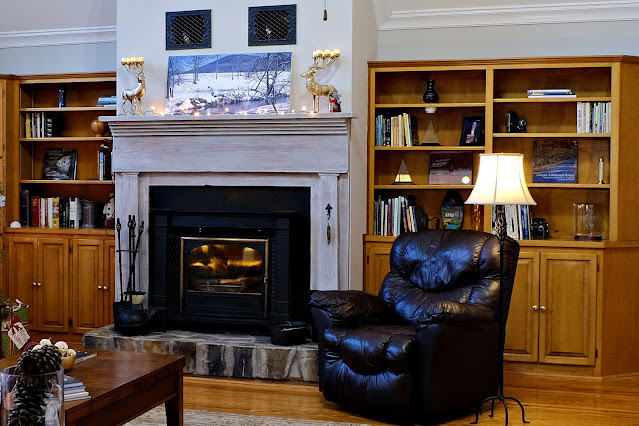Pencil of Light.
40x60-inch print. Pentax 6x7, Takumar 105 f2.5 lens.
Fujichrome 100 film, size 120.
Continuing the discussion from last Monday's post, in which I quoted Henri Cartier-Bresson on the obsessive pursuit of sharpness in photographs, I'm going to show a few photos and talk about the subject of image quality.
First, a caveat: If it's important to you to own cameras and lenses with the highest possible sharpness and image quality, that's great. I want everyone involved with photography to use the tools that give them the most satisfaction.
But those of us who are constrained by budgets and/or weight considerations need not feel that our equipment, or particularly, our photographs need be in any way inferior. Remember that most of the photographs we have seen and admired were made with cameras that are not the current latest and greatest.
So moving on to the photos -- leading off this post is one that hangs in my son's and daughter-in-law's great room. I call it "Pencil of Light," and it is 40x60 inches. That's five feet wide. The original photograph is a transparency (slide) in 2-1/4 x 2-3/4 size, which was considered a format that gave maximum quality in a hand-holdable film camera.
The second photo is our own great room. We have canvas panels that go above the fireplace for the various seasons. Most are four feet wide, although the ""Winter" panel shown is only about three and a half feet wide. It was made from a 35mm slide scanned on my Minolta-Dimage 5400 scanner.
Photos three and four are our "Spring" and "Fall" panels, both of them made with a 16-megapixel Olympus OM-D E-M5, first model, with the Panasonic 14-140mm f3.5-5-5.6 lens. Obviously, you can't see differences in blog-sized photos, and you can't see the actual panels, but the two shot with the Oly OM-D are much superior to the other two. And that's printing four feet wide from 16 megapixels on an m4/3s sensor.
So if results like this are obtainable from a 16 megapixel, micro 4/3s sensor, what could you do with 24 megapixels on an APS-C sensor? It seems to me that the cameras we already have offer plenty of image quality for almost anything most of us might wish to do.
Personally, I've dropped out of the megapixel race. But if that's the game you like to play, play it with my blessing. Someone has to keep the manufacturers in business.
Blog Note: I apologize for the missing posts last week. My sister was gravely ill in Indiana and we had to drive up last Monday, pulling our travel trailer through hard rain from Nashville on north. We have been staying at a campground near her home, where we do not have wi-fi. (You can't expect everything for $24 per night.)
After lingering all week, Elizabeth passed away Saturday morning from lung cancer. She was 70 and had never smoked.
Photographs copyright David B. Jenkins 2020)
Soli Gloria Deo
To the glory of God alone




I'm sorry for the loss of your sister. 70 is too young.
ReplyDeleteI'm very sorry to hear about your loss.
ReplyDeleteThanks, guys. 70 is way too young.
ReplyDeleteI am very sorry about your daughter. Today is the anniversary of the passing of my daughter Victoria from the swine flu (2009). Louis.
ReplyDeleteYour sister’s death is terribly sad; all of us share your grief at losing someone too young. To the main point of your post: several years ago, we cruised on a ship that had huge enlargements (maybe 15’ across) from 35mm film at every stairway landing. I didn’t note the photographer and can’t find it since the ship has been refurbished, but I think he was Ernst Haas. The important thing is that no one ever noticed the quarter-sized grain in the images, only how striking they were. We have plenty of technical image quality but most of us don’t achieve much artistic quality.
ReplyDelete